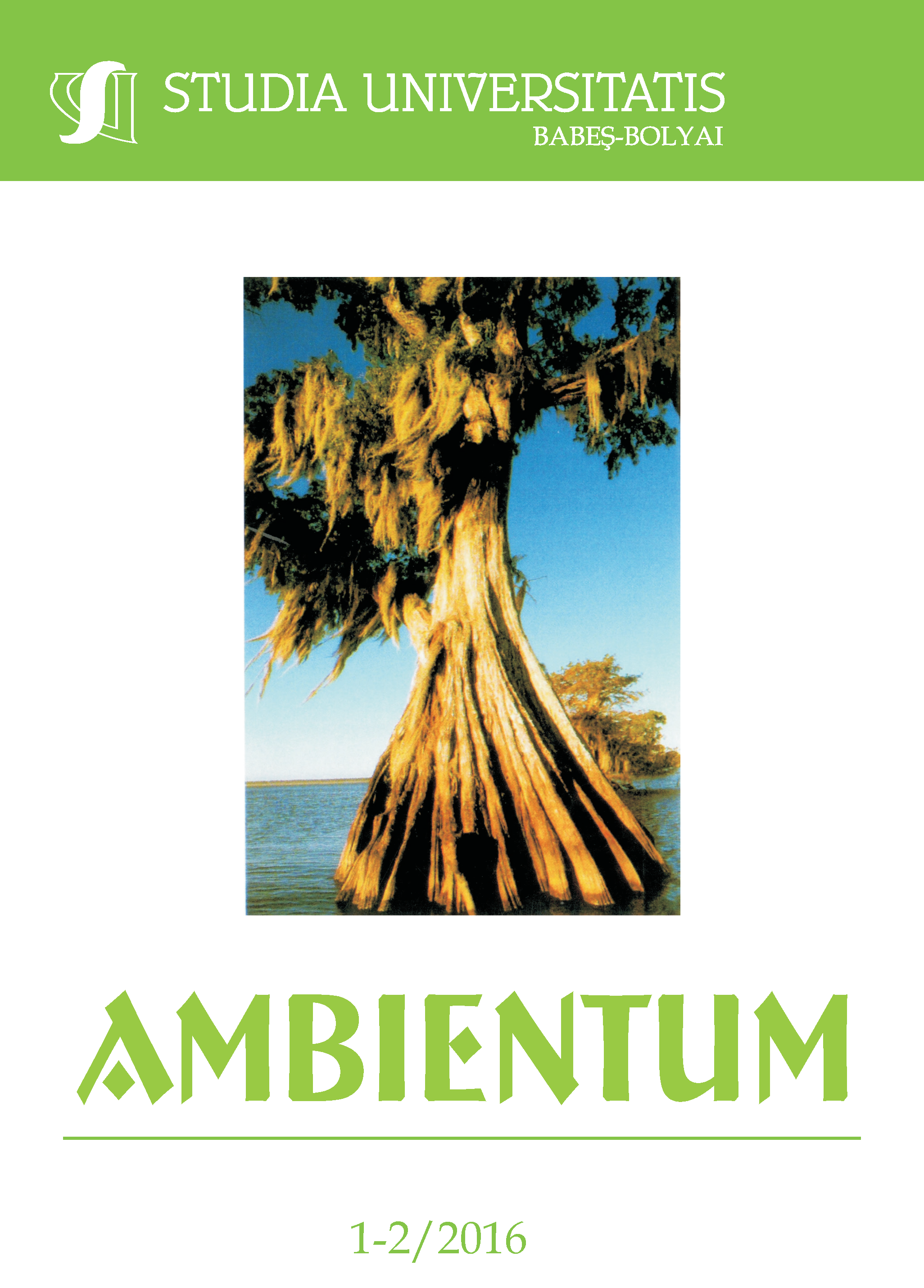ORGANIC FARMING AND THE GREENING OF THE COMMON AGRICULTURAL POLICY MADE WALLOON AGRICULTURE BECOME MORE ENVIRONMENT FRIENDLY IN 2015
Keywords:
Wallonia, organic farming, green payment, ecological focus areasAbstract
In Wallonia, organic farming continues to increase its share of agricultural activities, the number of organic farmers exceeding for the first time 10% of the total number of farmers in 2014, with 8.6% of the total agricultural area. Meadows represent 83% of the organic areas, general crops 15% and vegetables, 1%. The number of cattle heads is still increasing, while poultry and laying hen recorded a significant progress during the last years. Organic products consumption is also increasing and the market share of organic products in food products reached 2.3% in 2014. On the other hand, the implementation of the new Common Agricultural Policy, and particularly its green payment, obliges 50% of Walloon farmers to practice crop diversification and 46% to have at least 5% of ecological focus area within their arable land in 2015, which represents more than 24,000 ha. So, organic farming and ecological focus areas do have today a significant share of the Walloon agricultural area, leading to a more sustainable agriculture.
References
BIOWALLONIE, 2015, Les chiffres du bio 2014, Namur, 22 p.
Bureau J.C., 2012, The Common Agricultural Policy After 2013. Intereconomics, 6, pp. 316-321.
Burny Ph. and Terrones Gavira F., 2016, Implementation of the green payment within the scheme of the new Common Agricultural Policy (2015-2020): first results for Wallonia (South of Belgium). Supplement of “Quality-Access to Success” Journal, 17. pp 10-13.
Burny Ph. and Terrones Gavira F., 2015, Gainers and losers of the implementation of the new Common Agricultural Policy in Wallonia. Agriculture and Agricultural Sciences Procedia, 7, pp 50-53.
Burny Ph. and Debode F., 2013, Is organic farming the solution for the future of Walloon agriculture. Proceedings of the sixth international conference “Rural development 2013: Innovations and Sustainability”. Aleksandras Stulginskis University, Kaunas, Lituanie, pp. 514-517.
Burny Ph. and Gellens C., 1988, L’agriculture biologique : quelques caractéristiques des agriculteurs intéressés par ce nouveau mode de production dans quatre régions agricoles du Sud de pays. Annales de Gembloux, 3, pp. 213-220.
Comase and Di Antonio C., 2013, Plan stratégique pour le développement de l’agriculture biologique en Wallonie à l’horizon 2020, 69 p.
Dufumier M., 2012, Famine au Sud, malbouffe au Nord-Comment le bio peut nous sauver. NiL. Paris, 194 p.
European Commission, 2014, Commission delegated Regulation (EU) No 639/2014 of 11 March 2014 supplementing Regulation (EU) No 1307/2013 of the European Parliament and of the Council establishing rules for direct payments to farmers under support schemes within the framework of the common agricultural policy and amending Annex X to that Regulation. OJ L 181, 20.6.2014, 1 p.
European Parliament and the Council, 2013, Regulation (EU) No 1307/2013 of the European Parliament and of the Council of 17 December 2013 establishing rules for direct payments to farmers under support schemes within the framework of the common agricultural policy and repealing Council Regulation (EC) No 637/2008 and Council Regulation (EC) No 73/2009. OJ L 347, 20.12.2013, 608 p.
Hart K., 2015, Green direct payments implementation choices of nine Member States and their environmental implications. Institute for European Environmental Policy. London, 75 p.
Matthews A., 2013, Greening agricultural payments in the EU’s Common Agricultural Policy. Bio-based and Applied Economics, 2 (1), pp. 1-27.
Petrescu D.C., Burny Ph., Dragan A.A. and Petrescu-Mag R.M., 2014, Organic food between consumers’ interest and indifference. Sustainable development in conditions of economic instability. 3rd edition. Editura cibernetica Mc Bucuresti, pp. 508-517.
Service public de Wallonie, 2016, Notice explicative de la demande de nouvel engagement en mesures agroenvironnementales et agriculture biolog. 4 p.
Service public de Wallonie, 2016, Sustainable development. Walloon strategy. Vision-Diagnosis-Objectives-Action plan (Développement durable. Stratégie wallonne. Vision-Diagnostique-Objectifs-Plan d’actions). 60 p. + annexes.
Terrones Gavira F., Burny Ph. and Lebailly Ph., 2016, Etude d’impact du système des paiements directs 2015-2019 en Wallonie et d’éventuelles révisions au cours de cette période. Annexe 1. Impact du verdissement pour les agriculteurs wallons. Unité d’économie et développement rural, Gembloux Agro-Bio Tech, Université de Liège and Service public de Wallonie, 10 p.
Walloon Government, 2015, Regulation of the Walloon Government on 12 February 2015 implementing the direct payments regime in favour of farmers. (Arrêté du Gouvernement wallon du 12 février 2015 exécutant le régime des paiements directs en faveur des agriculteurs). Moniteur belge du 10/03/2015, pp.15823 – 15854.
Walloon Minister of Agriculture, 2015, Arrêté ministériel du 23 avril 2015 exécutant l’Arrêté du Gouvernement wallon du 1er février 2015 exécutant le régime des paiements directs en faveur des agriculteurs. Moniteur belge du 18/05/2015, pp. 26276 – 26293.
Downloads
Published
How to Cite
Issue
Section
License
Copyright (c) 2016 Studia Universitatis Babeș-Bolyai Ambientum

This work is licensed under a Creative Commons Attribution-NonCommercial-NoDerivatives 4.0 International License.





 ISSN (online): 2065-9490 | ISSN (print): 1843-3855 | ISSN-L: 2065-9490
ISSN (online): 2065-9490 | ISSN (print): 1843-3855 | ISSN-L: 2065-9490